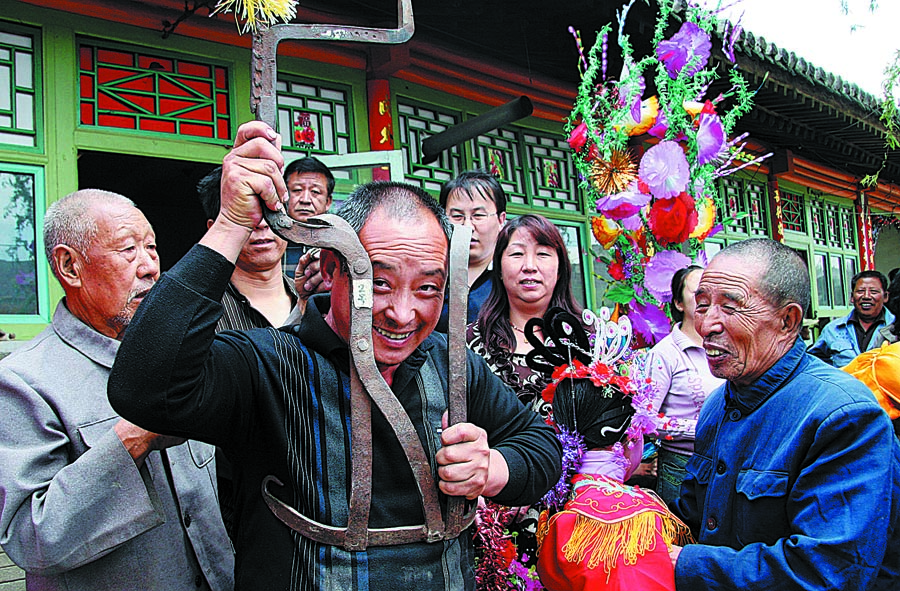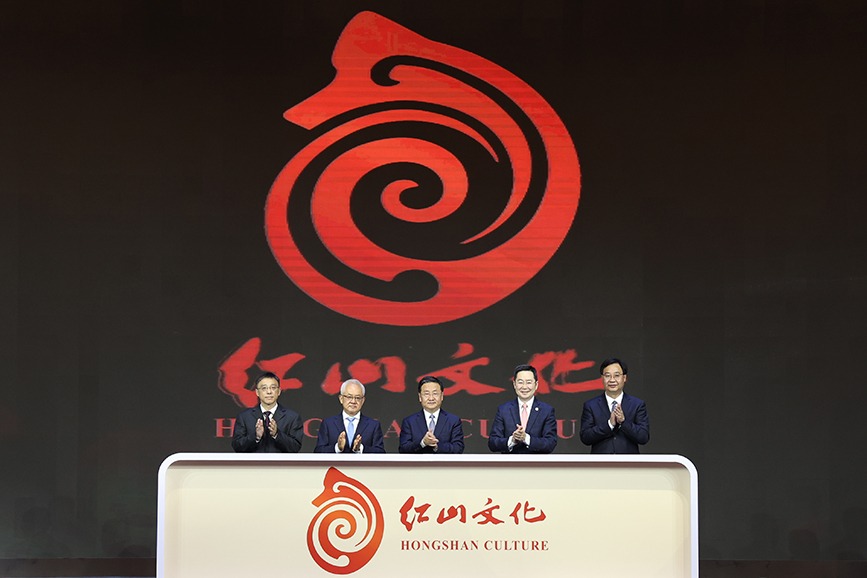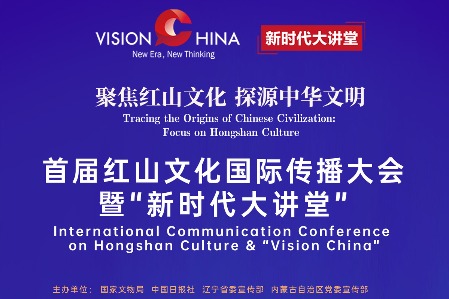Riding high






Research institute
Local authorities have established a naoge protection and research institute, and are providing funds for equipment and training. Officials are encouraging more people to join the work of protecting and developing the folk art.
Hao Laixi's 43-year-old son, Hao Yongjun, has followed in his father's footsteps.
"My father has been by my side and taught me bit by bit how to raise the stand and execute the dance moves," Hao Yongjun says.
In 2006, the folk art made its way to the nationally televised show Xingguang Dadao (Avenue of Stars) and received good reviews. The public exposure got the performers more invitations from across the country.
Hao Yongjun participated in the first national yangko (folk-style dance) festival in Qingdao, Shandong province, in 2008.
"Some foreigners in the audience thought the children on the stand weren't real at first. Their jaws dropped once the children came down and said 'hello' to them," he recalls.
The naoge team from Ekou won "best performance" at the festival. In 2013, their performance won over experts at Dance World, a show that started broadcasting on China Central Television in 1999.
"Ekou naoge is extraordinary, and I have never seen such a grand folk dance," says Tang Yi, a teacher from Beijing Dance Academy. "It is perfect in its music, dance, clothing, props and equipment."
Such public events thrill Hao Laixi, who is now working on ways to improve performances. "The existing iron stands are heavy and hard to maintain. I heard that carbon fiber is light and sturdy."
He says he plans to contact tech enterprises to explore such options, but he stresses that the bottom line is still the essence of tradition.
What concerns Hao Laixi about the folk art's development is the lack of participation by young people.
"Many of them don't have enough shoulder strength, partly due to a lack of exercise," he says. "But as long as they are willing to learn, we will hold nothing back and teach them everything we know."
Hao Laixi deems it his most important mission to carry this art forward.
When Hao Yongjun and his son, Hao Jincheng, proposed to livestream naoge during this year's Spring Festival in January, Hao Laixi readily agreed. "It helps people remember the art while spicing up their Spring Festival experience," he says.
Ji Liangsheng, deputy director of Daixian culture and tourism bureau, says more financial support will be given to naoge and other local intangible cultural elements in the future. Efforts will also be made to integrate them into tourism.
Peng Ke'er contributed to the story.




















